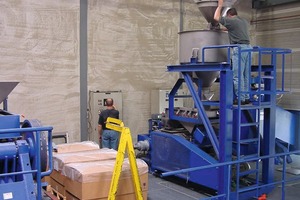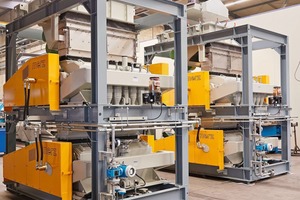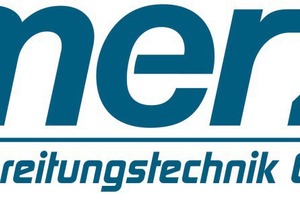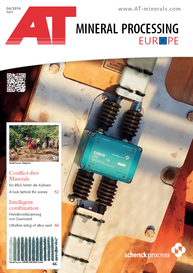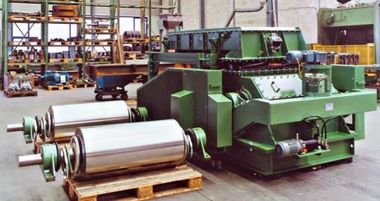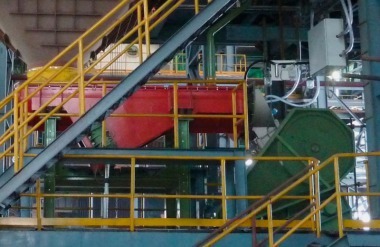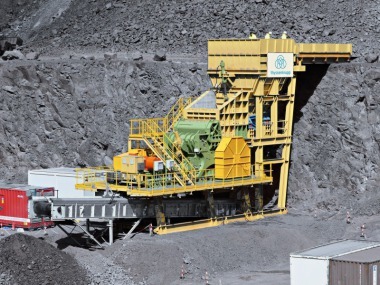Two-stage comminution
The task specifications in mineral processing have clearly changed in the last few years. They have become more complex and more comprehensive due to the changed markets. Today, a wide-ranging knowledge regarding the different possibilities of use of the materials is very important as well as being able to adjust oneself to the different task specifications by means of flexible solutions.
The company Merz Aufbereitungstechnik GmbH mainly supplies jaw crushers, agglomerate crushers (swordlike crushers) as well as single-roll and double-roll crushers of different sizes and dimensions. With speeds varying between 4 and 8 m/s, the wear rate is relatively small depending on the product. Different materials are used for rolls or segments according to the product, e.g. hardened chromium-nickel steel, manganese steel C45 and others.
Two-roll mills with central grinding gap adjustment are used for the comminution/grinding of products in the lower particle-size range of approx. 0.3-1.0 mm. Depending on the specific comminution properties, the following rule applies: the smaller the gap, the larger the friction. The size of the comminution system is selected according to the product specification, throughput and, possibly, tests carried out.
For many years Merz Aufbereitungstechnik GmbH runs a pilot plant, which offers the possibility to adjust oneself to the requirements of the customers and to carry out designs of plant components in step with actual practice or even complete processes. First preliminary tests are carried out manually with smaller machine sizes to check the feasibility. After specifying a plant concept, further performance tests are offered and carried out to confirm the design. All this is based on the willingness of the customer to hand in representative material samples. The tests comprise the complete manufacturing program of the company, i.e. comminution, screening, conveying and proportioning technologies as well as separation.
A product contamination is avoided due to the use of suitable materials. Thus, expensive downstream chemical cleaning processes are also avoided. Comminution systems are modified by ancillary equipment to meet the physical requirements. Hardly ever products have to be processed after a kiln or drying process at high temperatures of 200-600 °C to improve the comminution property or to prevent undesired chemical reactions. Uncontrolled thermal expansions are avoided due to additional inside cooling of the rolls with or without heat exchanger. Measures to avoid dust explosions become more and more important, e.g. due to existing ATEX requirements or product specifications. For this purpose, two-roll mills are designed with differential speeds as low as possible, i.e. frictions of < 1.0 m/s. In extreme cases the systems are designed gas-tight up to 400 mm water column for an operation with the inert gas N2.
Roll mills are additionally equipped with digital positioning systems, i.e. the grinding gap can be adjusted as a function of the particle size by means of remote control. The plant is restarted via the hydraulic clamping. The incorporation into a treatment process, i.e. into a control of overriding importance, is a possible alternative.
Hall 1, Stand 149

